How to Move Matching Gifts from the Back Burner to Top of Mind
Matching gifts are one of the most overlooked and neglected parts of fundraising, but they don’t have to be.
What Is A Matching Gift?
When corporations financially match donations that their employees make to a nonprofit or charity, that is referred to as a matching gift. For years, matching gifts were thought of as nice to have but not essential. Checks would trickle into an organization. Staff might be aware of a few opportunities where corporations match the gifts. But who had the time to follow up on that?
Major gifts, digital engagement, phonathon, planned giving, events, direct mail—these were the programs and priorities topping the agenda of most fundraising teams. Matching gifts sat on the backburner. Was it because they require too much effort? Or did organizations simply not have enough data? I always wondered why.
What’s The Value Of A Matching Gift Program?
I once asked a close colleague, a VP of Advancement for a small college, “If you know more matching gift donors are out there, why don’t you proactively pursue them?”
His answer alarmed me: “Because even if we can identify the 11% of our donors who can double their gift, how will we possibly reach out and engage them? We don’t have time for that. We have fundraising to do!”
I suggested that he look at ROI, engagement metrics, and overall donor loyalty. How much harder is it to acquire 11% new donors than it is to ask the 15% of your loyal donors who work for matching gift companies to simply submit their request to have their gift doubled or even tripled? To me, it was a no-brainer.
How HEPdata’s Matching Gifts Program Can Help You
Well, that was then, and this is now. HEPdata works with thousands of colleges, universities, and nonprofits to proactively pursue matching gifts. Using our Matching Gift Solutions, we help organizations raise hundreds of millions of dollars every year that were previously anonymous and ultimately unclaimed.
HEPdata certainly would help my colleague, and it can help you. Here’s how:
- First, matching gifts should be an integral part of your fundraising strategy. This means when you’re having conversations with your donors, matching gifts should be an integrated, intentional part of that conversation. Think about that 15% of donors and how their match can boost your fundraising.
There are two main challenges with matching gift fundraising campaigns:
- Identification—How do you identify which of your donors work for companies that offer corporate matching gift programs? Seems like a tedious process, right? To us at HEPdata, that’s the easy part. No matter how the gift comes in, our first step is to identify where those matching gift opportunities lie so that we can engage them. The days of waiting for checks to trickle in are over. We don’t let our clients wait for matching gifts to come to them. We go out and bring our clients to those matching gift donors.
- Conversion—As my close colleague suggested, the resources and time needed to engage donors around matching gifts is often the most daunting task. Often organizations are not equipped to follow up with donors to ensure they submit their match requests. HEPdata to the rescue! We can build out an automated engagement plan with fully customized and branded emails to deliver everything the donor needs to take action.
We make it as easy for donors to double their gift and provide our clients’ development staff with valuable insights into where their donors are in the matching gift process, reporting and analytics, and any next steps required. It’s like having a team of matching gift coordinators working for you!
Matching Gift Programs Don’t Have To Be Hard
As we’ve continued to work with clients and fine-tune our solutions, we’ve realized that matching gifts don’t have to be hard. Using technology and automated tools for matching gifts should no longer be something that would be nice. Rather, it should be an important part of your fundraising operation, unlocking “free money” to help move your mission forward.
So, now that you know matching gifts don’t have to take a lot of time and toil, schedule an exploration discussion with us, so we can help you turn opportunity into revenue.
